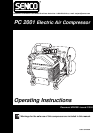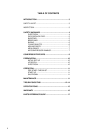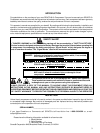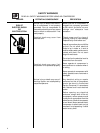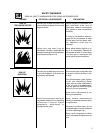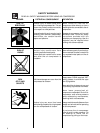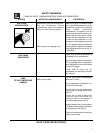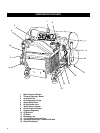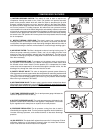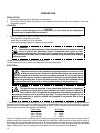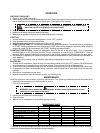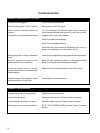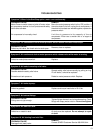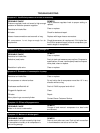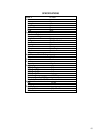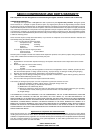
9
COMPRESSOR FEATURES
1) MOTOR/PRESSURE SWITCH: This switch is used to start or stop the air
compressor. Moving the switch to the “Auto” (On) position will provide automatic
power to the pressure switch which will allow the motor to start when the air tank
pressure is below the factory set “cut-in” pressure. When in the Start/ Stop Option,
the pressure switch stops the motor when the air tank pressure reaches the factor
set “cut out” pressure. For safety purposes, this switch also has a pressure release
valve located on the side of the switch designed to automatically release compressed
air from the air compressor pump head and its discharge line when the air compressor
reaches “cut-out” pressure or is shut off. This allows the motor to restart freely. Moving
the switch to the “Off” position will remove power from the pressure switch and stop
the air compressor.
2) MOTOR THERMAL OVERLOAD: The electric motor has a manual thermal
overload protector. If the motor overheats for any reason, the thermal overload will
cut off power, thus preventing the motor from being damaged. Wait until the motor is
cool before pressing the thermal overload button to reset and begin working again.
3) AIR INTAKE FILTER: This filter is designed to clean air coming into the pump. To
ensure the pump continually receives a clean, cool, dry air supply this filter must
always be clean and ventilation opening free from obstructions. The filter can be
removed for cleaning by using warm, soapy water. Rinse the filter and air dry. Replace
filter when necessary.
4) AIR COMPRESSOR PUMP: To compress air, the pistons move up and down in
the cylinders. On the downstroke, air is drawn in through the air intake valves while
the exhaust valves remain closed. On the upstroke, air is compressed, the intake
valves close and compressed air is forced out through the exhaust valves, into the
discharge line, through the check valve and into the air tank.
5) SAFETY RELIEF VALVE: This valve is designed to prevent system failures by
relieving pressure from the system when the compressed air reaches a predetermined
level. The valve is preset by the manufacturer and must not be modified in any way.
To verify the valve is working properly, pull on the ring. Air pressure should escape.
When the ring is released, it will reseat.
6) AIR TANK DRAIN VALVE: The drain valve is used to remove moisture from the air
tank(s) after the air compressor is shut off.
NEVER attempt to open the drain valve
when more than 10 PSI of air pressure is in the air tank! To open the drain valve,
turn the knob counterclockwise.
7) AIR TANK PRESSURE GAUGE: The air tank pressure gauge indicates the
reserve air pressure in the air tank (s).
8) OUTLET PRESSURE GAUGE: The outlet pressure gauge indicates the air
pressure available at the outlet side of the regulator. This pressure is controlled
by the regulator and is always less or equal to the air tank pressure.
9) PRESSURE REGULATOR: The air pressure coming from the air tank is
controlled by the regulator knob. Turn the pressure regulation knob clockwise to
increase discharge pressure, and counterclockwise to decrease discharge
pressure.
10) OIL DIPSTICK: The dipstick will register the amount of oil in the pump. Oil level
should be checked on a daily basis to ensure it does not exceed the maximum
notch or fall below the minimum notch on the dipstick
OFF
AUTO
1
2
3
10
6
7
9
8
5



